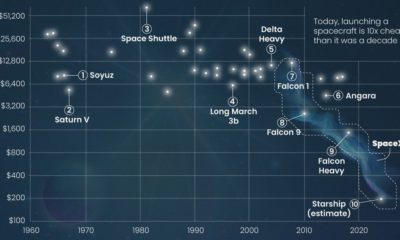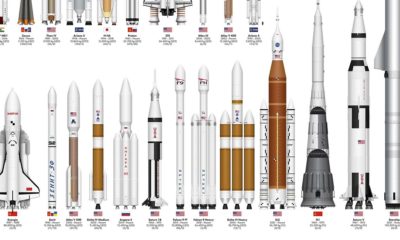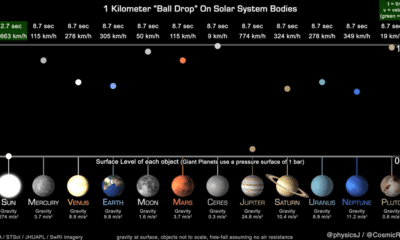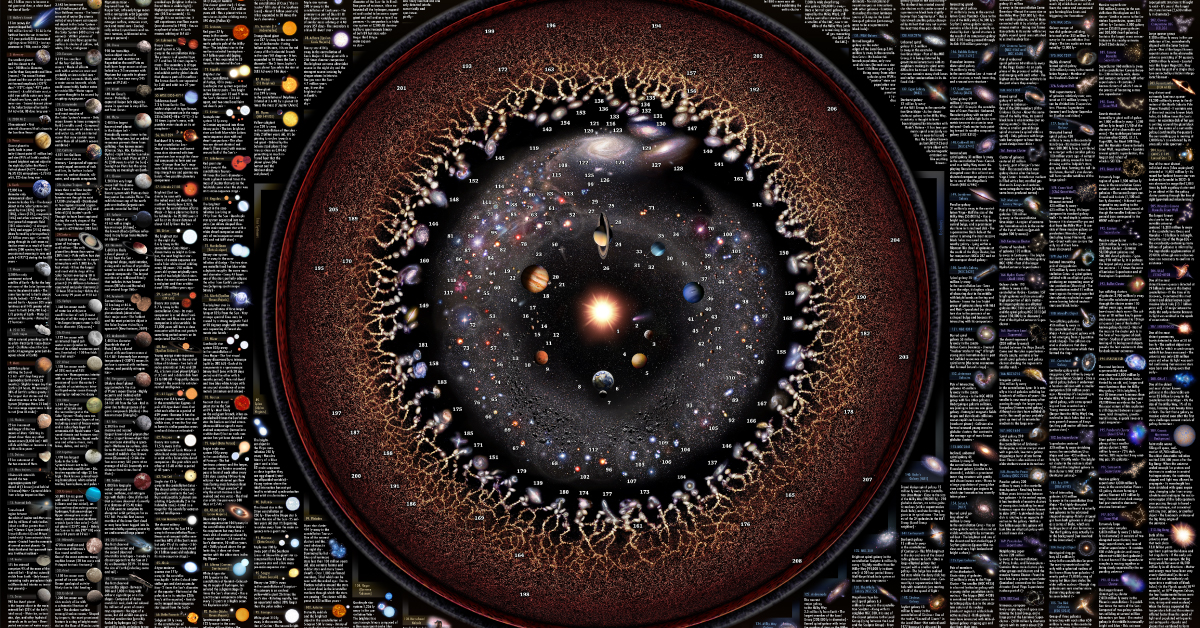Our thirst for exploration has brought whole nations together to create more advanced technologies─all in the pursuit of discovering the outer reaches of the universe. Today’s infographic from ProcureAM highlights the exciting journey humans have taken into outer space, and the economic boom across industries as a result of this quest for discovery. With an ever-expanding universe, how far have we gone?
Our Connection with Outer Space
Humans have been fascinated with space for millennia, using the planets and stars to navigate, keep time, and discover scientific facts about the universe. Since the 1960s, humans have also been traveling into space and pushing the limits of our technological and physical boundaries with each excursion. A Brief History: Humans in Space
1957 ─ First satellite launched: Sputnik1 1961 ─ First human in space: Yuri Gagarin 1965 ─ First human spacewalk: Aleksei Leonov 1969 ─ First human on the Moon: Neil Armstrong 1984 ─ First untethered spacewalk: Bruce McCandless 1998 ─ First modules launch to begin construction of the International Space Station
Nations around the world have used these trips and technological milestones to drastically improve life. Reusable rockets and advanced satellite technology enable greater innovation on Earth through higher-quality broadband internet, 5G cellular networks, and the Internet of Things (IoT) connected devices.
The Space Economy is Ready for Lift-off
Three major sectors are dominating the global space economy today:
Products and Services This sector drives the majority of commercial activity in the space industry. These products and services meet specific needs in telecommunications, location-based services, and monitoring and observation. Infrastructure Production of space vehicles such as rockets and rovers, ground and space stations, and receivers such as satellites, receivers, and terminals for internet and TV are also booming. As the global population grows, our need to stay connected to each other evolves. Government Most modern government space agencies are actively monitoring and tracking space to offer better resources and services for their citizens, including geopolitical monitoring and missile tracking.
Can lower costs, new technology, and increased commercial activity make space the next trillion-dollar industry?
The Next Frontier: Investing in Space
Investments in space-related industries have shot up in recent years, rising from US$1.1 billion in 2000-2005 up to $10.2 billion between 2012-2018. This meteoric growth is due to fewer barriers in the space industry, which was previously restricted to governments or the ultra-wealthy. Private sector companies are responsible for much of the growth. Since 2000, Goldman Sachs estimates that $13.3 billion has been invested into newly launched space startups. These companies, backed by titans such as Jeff Bezos and Elon Musk, are pledging to support innovations from the practical to the fantastical, to boldly go where none have gone before:
SpaceX ─ powerful satellite Internet service Deep Space Industries and Planetary Resources ─ first commercial mines in space DoubleTree Hilton ─ first company to bake cookies in space Blue Origin ─ deep-space exploration
And with recent technological advancements, these goals are edging closer to reality. For example, take space tourism. While costs are still astronomical, Blue Origin and Virgin Atlantic are banking on the idea of the first space vacations taking place as early as 2020─and growing in popularity from there.
Dennis Tito paid $20 million to become the first space tourist in 2001 Prepaid tickets for 90-min suborbital flights in 2020 with Virgin Galactic are going for $250,000
The Future of the Space Economy
Advances in satellite and rocket technology mean that costs are declining across the entire commercial space economy. Because of this, the global space industry may jump light years ahead in the next few decades. For the first time since our journey to the stars began, the final frontier is well within our grasp. on And while we haven’t figured out all the answers quite yet, we’ve made some remarkable discoveries when it comes to learning about outer space. What are some of the most notable observations that scientists have discovered so far? This map of outer space by Pablo Carlos Budassi highlights more than 200 celestial objects in our universe and provides details and facts about each one.
The Types of Celestial Objects Mapped
To create this graphic, Budassi used a combination of logarithmic astronomical maps from Princeton University, as well as images from NASA. The visualization highlights 216 different celestial objects that are color-coded and organized into five overarching categories:
Moons and Asteroids Planets Galaxies Star System Great Scales/Superclusters
At the center of the map is the Sun, which is the largest object in our Solar System. According to NASA, the Sun’s volume is equivalent to 1.3 million Earths. The Sun is the powerhouse of life here on Earth—its energy provides our planet with a mild, warm climate that keeps us alive, keeping the Earth from becoming a frozen rock. While the Sun is the only star in the Solar System, there is a neighboring star system called Alpha Centauri that’s approximately 4.37 light-years away. It’s made up of three stars—Proxima Centauri, Alpha Centauri A, and Alpha Centauri B. Proxima Centauri, as the Latin name indicates, is the closest of the three to Earth and has an Earth-sized planet in its habitable zone.
The Life of a Star
In a star’s early stages, it’s powered by hydrogen. However, when its hydrogen stores are depleted, some stars are able to fuse helium or even heavier elements. Stars similar to the size of the Sun will grow, cool down, and eventually transform into a red giant. The Sun has about 5,000 million more years before it reaches its red giant stage, but when that happens, it will likely expand to the point where it swallows up the Earth. While stars emit energy for years, it’s important to note that they don’t shine for eternity. Their exact life span depends on their size, with bigger stars burning out faster than their smaller counterparts. But as light from distant objects millions of light-years away takes a long time to reach us here on Earth, the largest of stars shine for hundreds of millions of years after they die.
Just How Big is Our Universe?
Some experts believe that the universe is infinite, while others argue that we can’t yet know for certain because current measurements aren’t accurate enough. However, scientists believe that our observable universe extends about 46 billion light-years in every direction, giving it a diameter of roughly 93 billion light-years. But just how much of the universe extends beyond what we can see? We may never find out.













